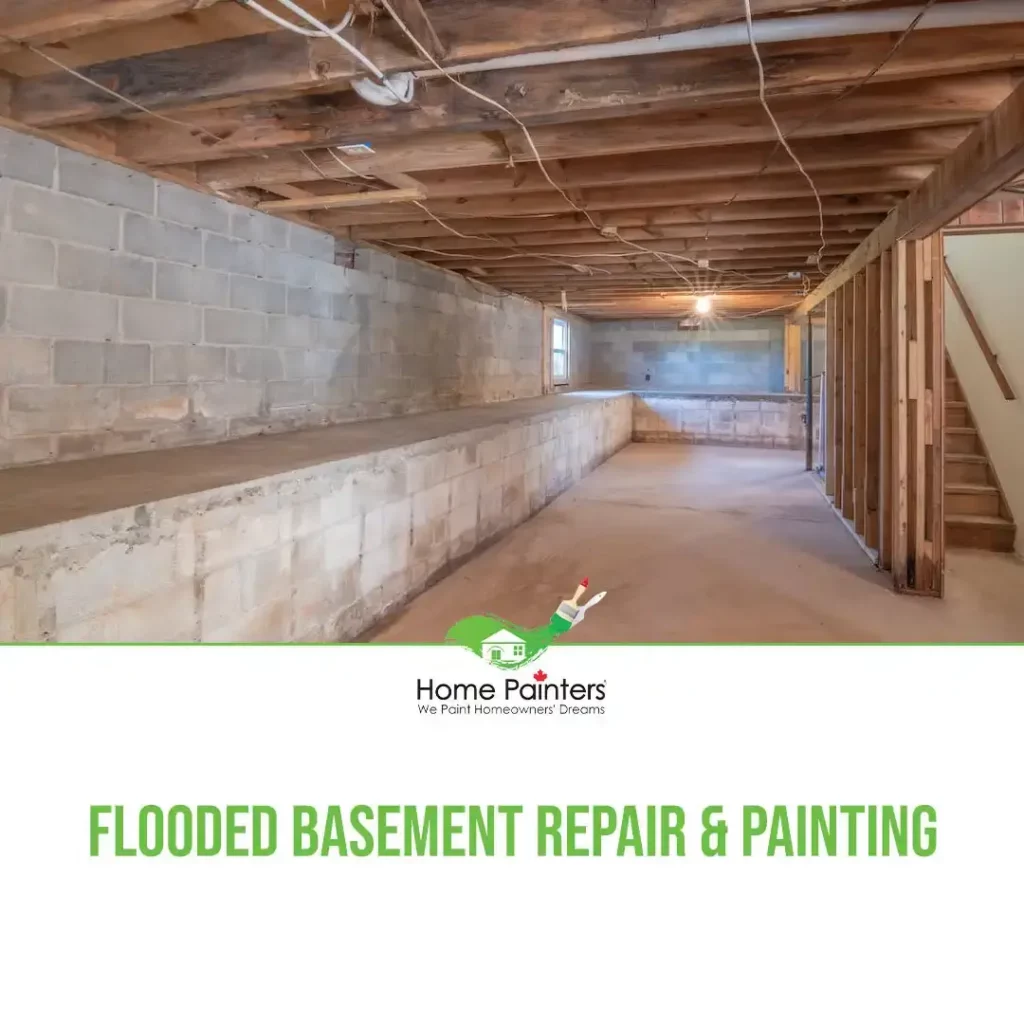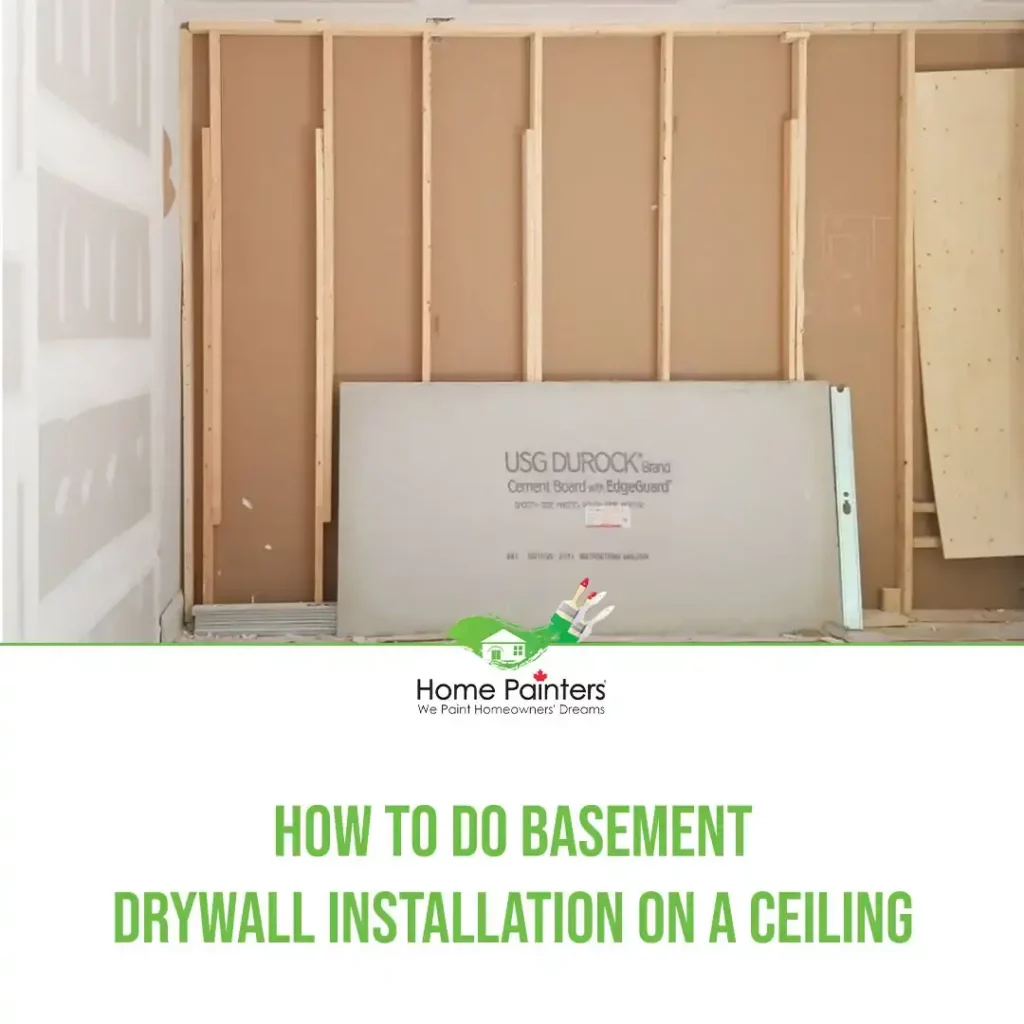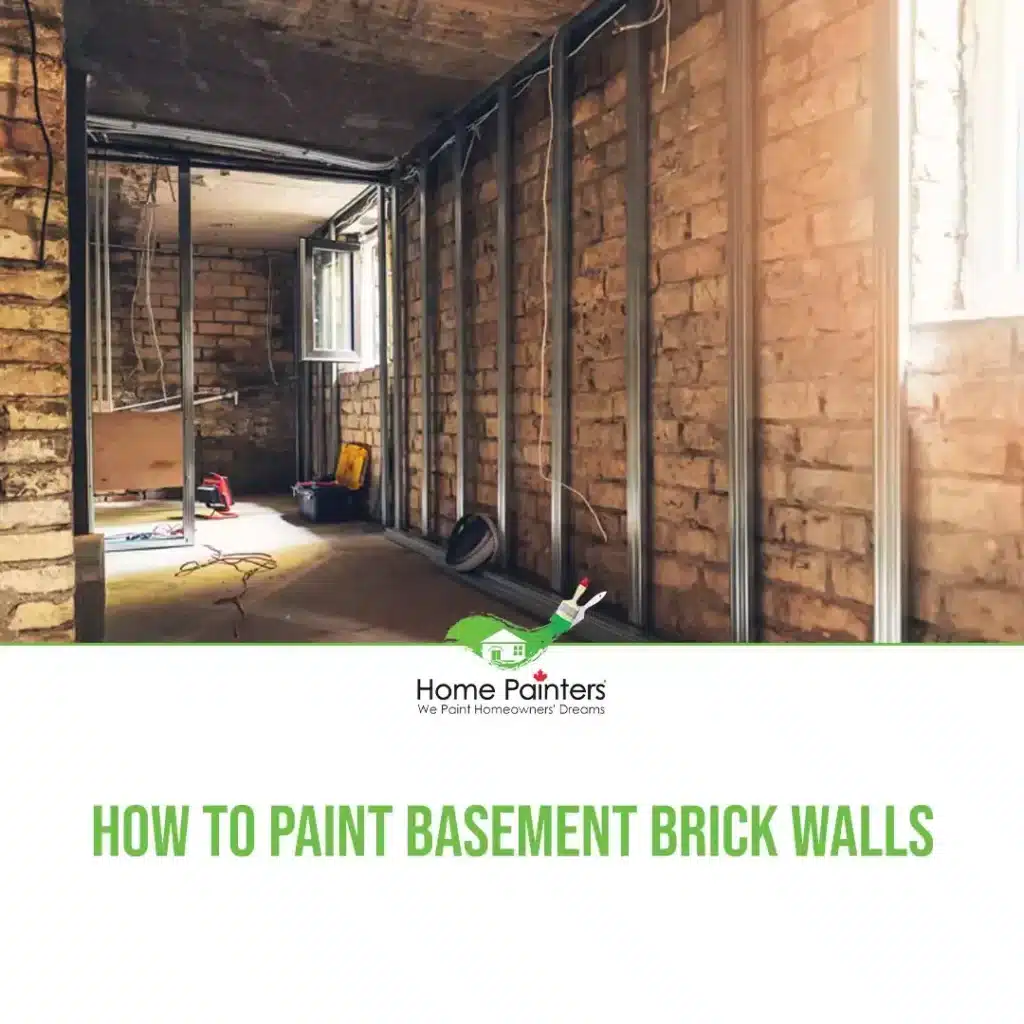
Hanging drywall on a basement ceiling is a difficult job. It’s difficult because, with most basements, the ceiling is lower than on the upper floors. Not to mention the most challenging part is holding the sheets of drywall above your head and ensuring it aligns properly while setting your screws. You should probably enlist the help of a friend for this particular job or rent a drywall jack. In addition, the difficulty of this job is having to purchase many items to have a successful finish.
It’s certainly not an impossible task, though. So, let’s dig into how to drywall a basement ceiling!
Drywall Basement Installation
First, you will need to figure out how much drywall you need to cover your entire basement ceiling. They are usually sold in 4×8 foot sheets. Measuring tape is your best friend during this drywall installation. Measure each side of the room and then calculate the ceiling. Then, you will know how many sheets to use to fill the space. If you are a visual learner, you can create a drawing of the ceiling’s area and notice the measurements through that. You’ll have to cut each sheet and determine where it can go.
In addition, use a pencil to place the marks on the ceiling so you don’t get confused. Also, you can use marks to know where the ceiling joists cross. They should align with the center of the joists. Finally, when you are at the stage to setting the screws, the marks will be the perfect guide. Precision is vital.
First Sheet of Drywall
Prepare your first sheet of drywall to hang. It is recommended to start in the corner first. The place where you can see the drywall, mark and measure where you’ll be making any cuts.
This way, you can accommodate a fixture when a sheet needs to be sized down or fit into a smaller space. If you don’t need to cut anything, put the sheet over your head and position it against the wall. As mentioned previously, this is a difficult job to do alone, and if you have a friend helping you, they can be very handy.
Next, use a power drill fitted with the drywall bit. Set about 3 or 4 drywall screws into the joists. Use your marks as a guide. When that is in place, the sheet is secured.
Now, you must set the screws into each joist every 16 inches. Once that is complete, you will have to complete those steps for every sheet.
Materials Needed for Drywall Installation:
- Drywall sheets (of course)
- Screws
- Scissors
- Power drill
- Pencil (to make marks)
- Utility knife (preferably 6 – 8 inches)
- Drywall knife
- Drywall saw
- Gypsum core
- Drywall pan
- All-purpose compound (mud)
- Tape
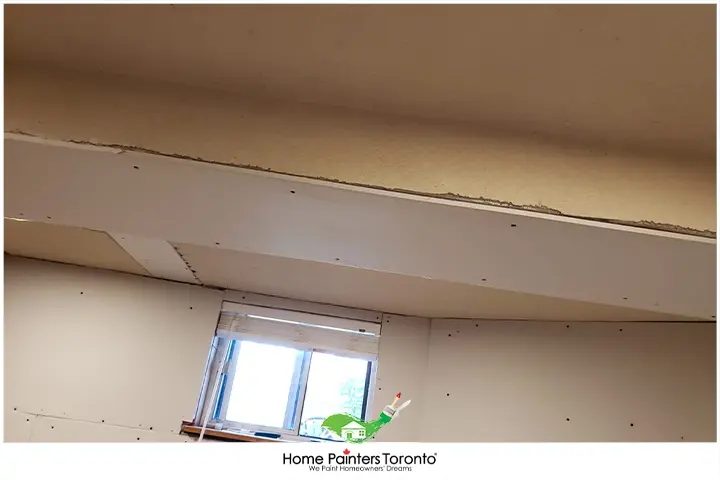
Cut the Drywall Sheets Properly
Before cutting the sheets, you should ensure you measured and marked all the lines correctly. Use your utility knife to cut through a layer of paper and gypsum core, but do not cut through the entire drywall. Fold the smaller section to break it away from the more significant piece.
On the opposite side, run the knife over the seam in the paper, which is created when the drywall is folded over. Now, you can cut the paper cleanly. Making cuts for fixtures is also important.
Take the measurements for its position and mark the full shape of the cut using a drywall saw.
Follow your lines and once the cut is complete, remove the section and hang the sheet.
Last Stages of Basement Drywall Installation
As with any job, it is key to finish successfully. This is the stage where you’ll need your all-purpose compound (mud), and use the drywall pan to fill it in. Below is the process on how to mud drywall ceiling;
• Begin with your 6-inch knife and work with one joint or seam at a time. With that, fill it with an even layer of mud.
• Now, you’ll need to cover the entire seam with tape and pass over it again to keep the tape in place. Squeeze out all the excess mud.
• When that’s complete, with your 8-inch knife, cover each taped-up seam with a layer of mud. Smooth it all out.
• When the mud is dry, pass each seam a second time with the 10-inch knife to cover the swath.
• Finally, cover each screw head by smearing a bigger amount of mud than needed. Scrape the excess mud with your drywall knife, and smooth it over.
When to Call a Professional for Drywall Basement Ceiling Installation
A critical component in transforming an unfinished basement into a usable space is the installation of a drywall ceiling, which can add an aesthetic touch, soundproofing, and insulation. In some cases, you might decide to tackle this project on your own. However, there are times when it’s best to call a professional for drywall basement ceiling installation.
1. Lack of Experience
If you have little to no experience with drywall installation or home renovation projects, you may want to consider calling a professional. Proper installation of drywall requires precision, careful planning, and specific techniques to ensure a polished finish. Making mistakes can be costly both in terms of time and money. A professional drywall installer can guarantee a higher-quality result and save you from potential mishaps.
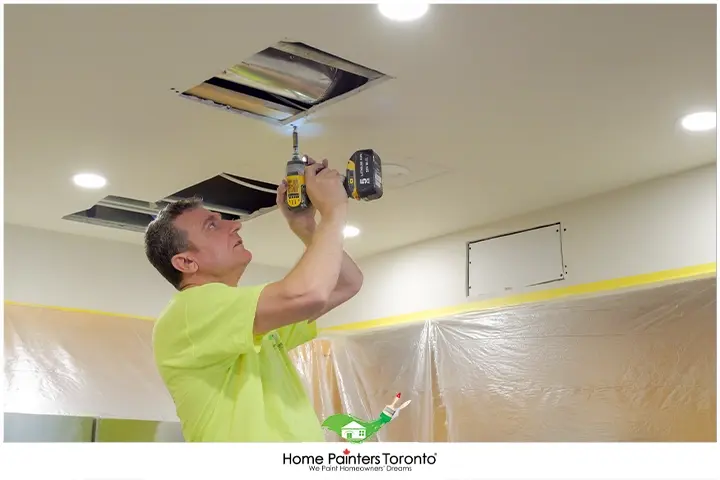
2. Complex Basement Layout
Basements often have complex layouts, with features like ductwork, pipes, wiring, and support beams that could make it difficult for a novice to handle drywall installation. A professional drywall installer will know how to work around these obstacles efficiently, saving you time and frustration.
3. Limited Time or Resources
Installing and hanging drywall ceilings can be time-consuming and labour-intensive, requiring specialized tools and equipment, such as scaffolding or a drywall lift. If you’re pressed for time or don’t have access to the necessary tools, hiring a professional can save you from the hassle and ensure the job gets done correctly and on schedule.
4. Concerns About Moisture and Mould
Basements are often prone to moisture and mould issues due to their location and the materials used in their construction. Properly addressing these issues is crucial to protecting your investment and your family’s health. Professionals have the experience and knowledge to identify and address any existing moisture problems, as well as to install moisture-resistant drywall to prevent future mould growth.
5. Need for Expert Consultation
If you have specific design ideas for your basement ceiling, such as decorative features, recessed lighting, or innovative storage solutions, hiring a professional can help bring your vision to life. Professional installers can provide guidance on the best materials and techniques to use and help you achieve the desired look and functionality of your basement.
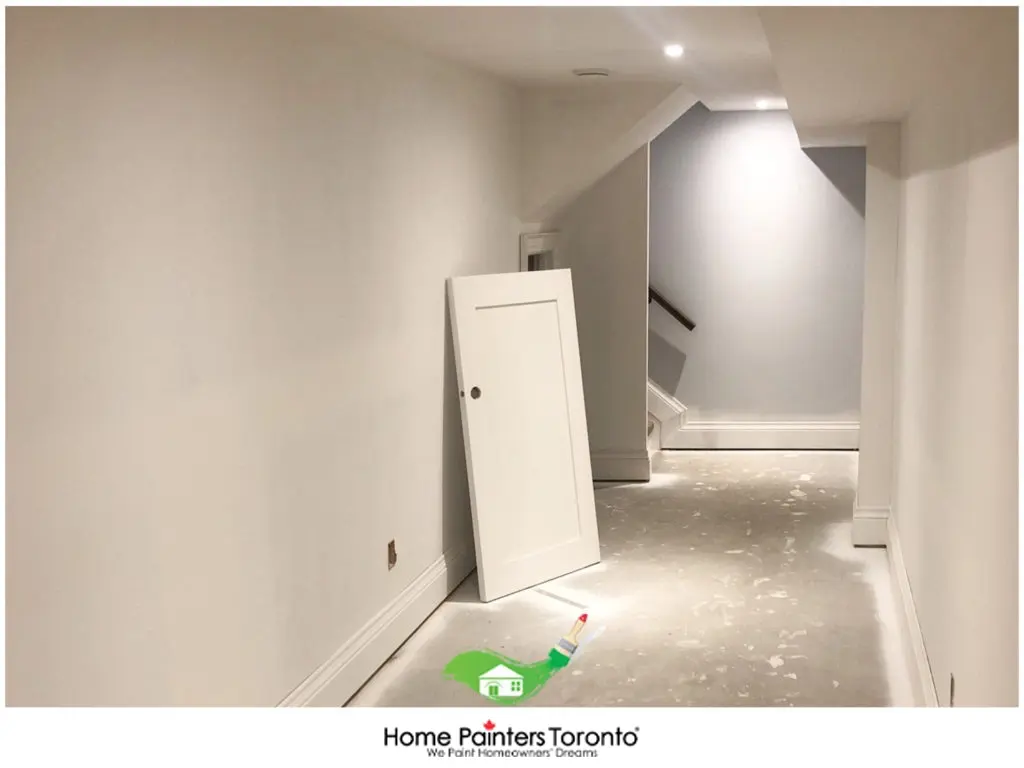
6. Compliance with Building Codes
Drywall basement ceiling codes and regulations vary by location and may require permits or inspections for major renovation projects like installing a drywall ceiling in your basement. Professional drywall installers will be familiar with these codes and can ensure that your installation meets all regulations, avoiding potential issues with your local building authority.
7. Peace of Mind
One of the primary reasons to call a professional for drywall basement ceiling installation is the peace of mind that comes from knowing your project is in competent hands. Professional installers are skilled and experienced and possess the necessary licenses and insurance to protect you from accidents or damage.
In conclusion, while installing a drywall basement ceiling might seem like a straightforward DIY project, there are many reasons to consider hiring a professional. The expertise, experience, and resources a professional provides can ensure a smooth, high-quality result, transforming your basement into the functional and attractive space you envision.
More interesting blogs related to
“HOW TO DRYWALL A BASEMENT CEILING”
That was some tough work! How to drywall a basement ceiling is not an easy task by any means. Enlist a friend to help you out or even get professional help. Because likely after you’re done with the drywall installation, you’ll be in need of some painter services! That’s exactly where Home Painters Toronto thrives! Allow our professional painters with over 36 years of experience to do the hard work for you. Please give us a call at 416.494.9095, or email us at Brian@HomePaintersToronto.com. Also, don’t forget to follow us on all our social channels below!


